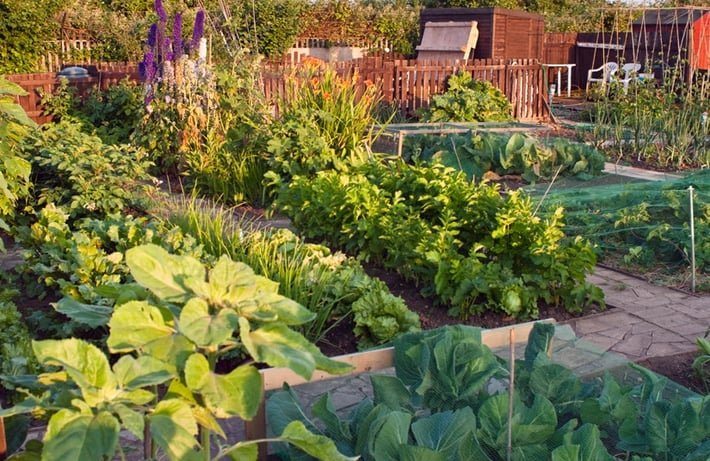 Community gardens have grown in popularity in cities and towns across the country. For some, the gardens are gathering places to reconnect with nature or to beautify communities by replacing abandoned vacant lots with thriving vegetation. For others, these gardens provide a place to meet neighbors and spend time with friends, as well as a source for food and flowers for whoever is willing to care for the plants. Despite their many benefits, may also increase the opportunity for exposure to common urban soil contaminants such as polycyclic aromatic hydrocarbons” or PAHs.
Community gardens have grown in popularity in cities and towns across the country. For some, the gardens are gathering places to reconnect with nature or to beautify communities by replacing abandoned vacant lots with thriving vegetation. For others, these gardens provide a place to meet neighbors and spend time with friends, as well as a source for food and flowers for whoever is willing to care for the plants. Despite their many benefits, may also increase the opportunity for exposure to common urban soil contaminants such as polycyclic aromatic hydrocarbons” or PAHs.
Researchers have found garden soils with elevated levels of PAHs in New York City’s community gardens. The researchers published their findings in an article in Environmental Toxicology and Chemistry.
“A total of 69 soil samples from 20 community gardens in New York City (New York, USA) were collected and analyzed for 23 polycyclic aromatic hydrocarbons (PAHs) and black carbon. For each garden, samples were collected from nongrowing areas (non-bed) and from vegetable-growing beds, including beds with and without visible sources of PAHs. The sum of the US Environmental Protection Agency's 16 priority PAHs ranged up to 150 mg/kg, and the median (5.4 mg/kg) and mean (14.2 mg/kg) were similar to those previously reported for urban areas in the northeast United States,” as well as cities around the world with a history of industrialization.
The research points to the primary source of the PAHs as the deposition of particles from air emissions.
“The PAH concentrations were significantly and positively associated with black carbon and with modeled air PAH concentrations, suggesting a consistent relationship between historical deposition of atmospheric carbon-adsorbed PAHs and current PAH soil concentrations.”
As a result of interventions on air emissions in NYC and New York State, researchers expect to see future reductions in PAHs in the soil.
“Median PAH soil concentration from non-bed areas was higher (7.4 mg/kg) than median concentration from beds in the same garden (4.0 mg/kg), and significantly higher than the median from beds without visible sources of PAHs (3.5 mg/kg). Median PAH concentration in beds from gardens with records of soil amendments was 58% lower compared with beds from gardens without those records. These results suggest that gardening practices in garden beds without visible sources of PAHs contribute to reduce PAH soil concentrations.”
Dr. Lydia Marquez-Bravo, the lead author of the study said in a press release, “Community gardens are becoming increasingly popular because of their many benefits, but gardening in the city is not without some risk. We found that some garden soils have elevated levels of PAHs; however, our study also provides some evidence that beds used for growing vegetables may have lower levels of PAHs than non-cultivated areas in the gardens, suggesting that it might be possible to reduce PAH concentrations by gardening practices alone."
Download Teledyne Tekmar’s Application Note, Analysis of EU15+1 PAHs in Soil by the AutoMate-Q40: An Automated QuEChERS Solution, for full details about sample prep and analysis, instrument calibration results and reproducibility, and accuracy result.
Source: http://onlinelibrary.wiley.com/doi/10.1002/etc.3215/abstract
